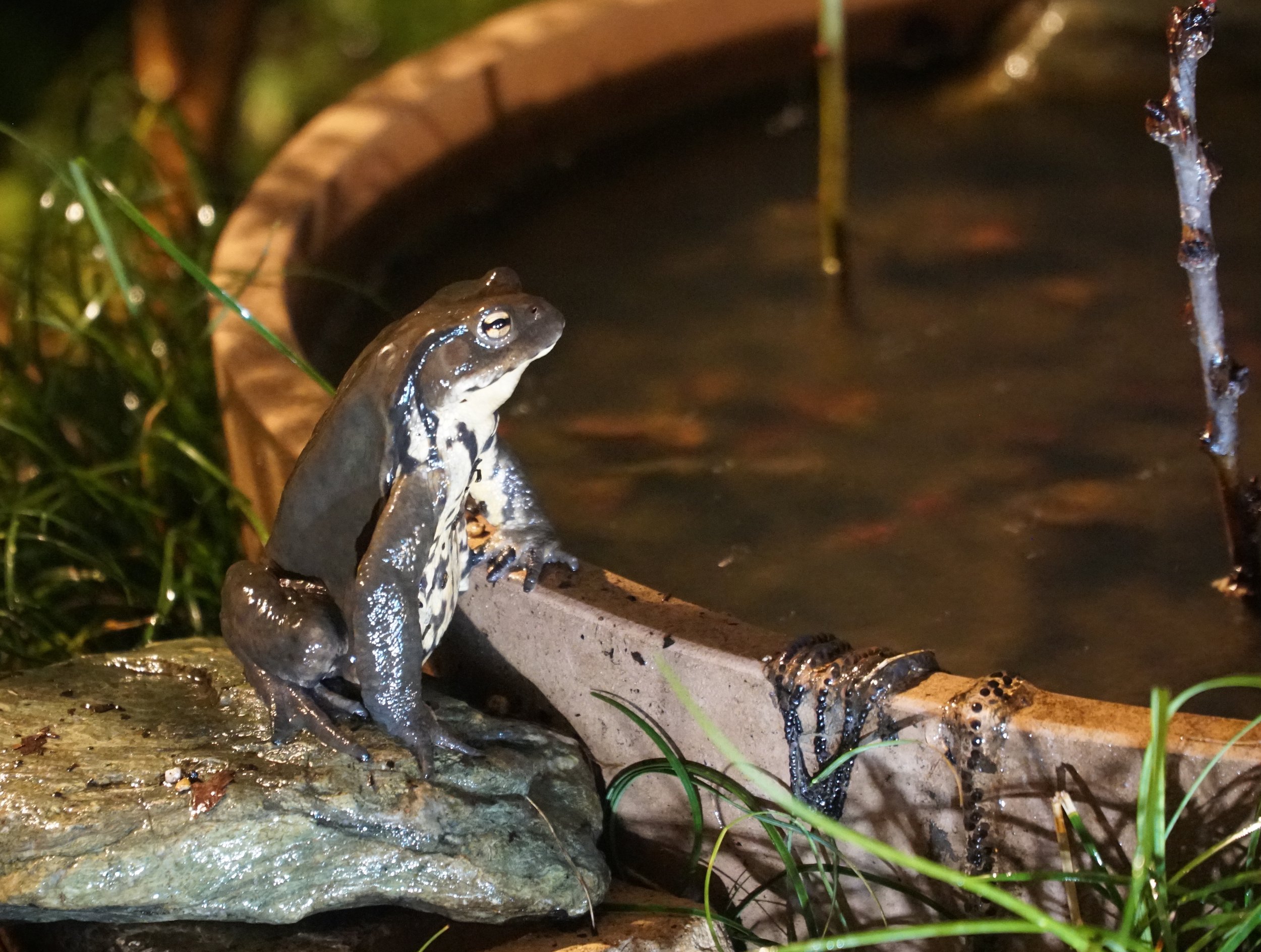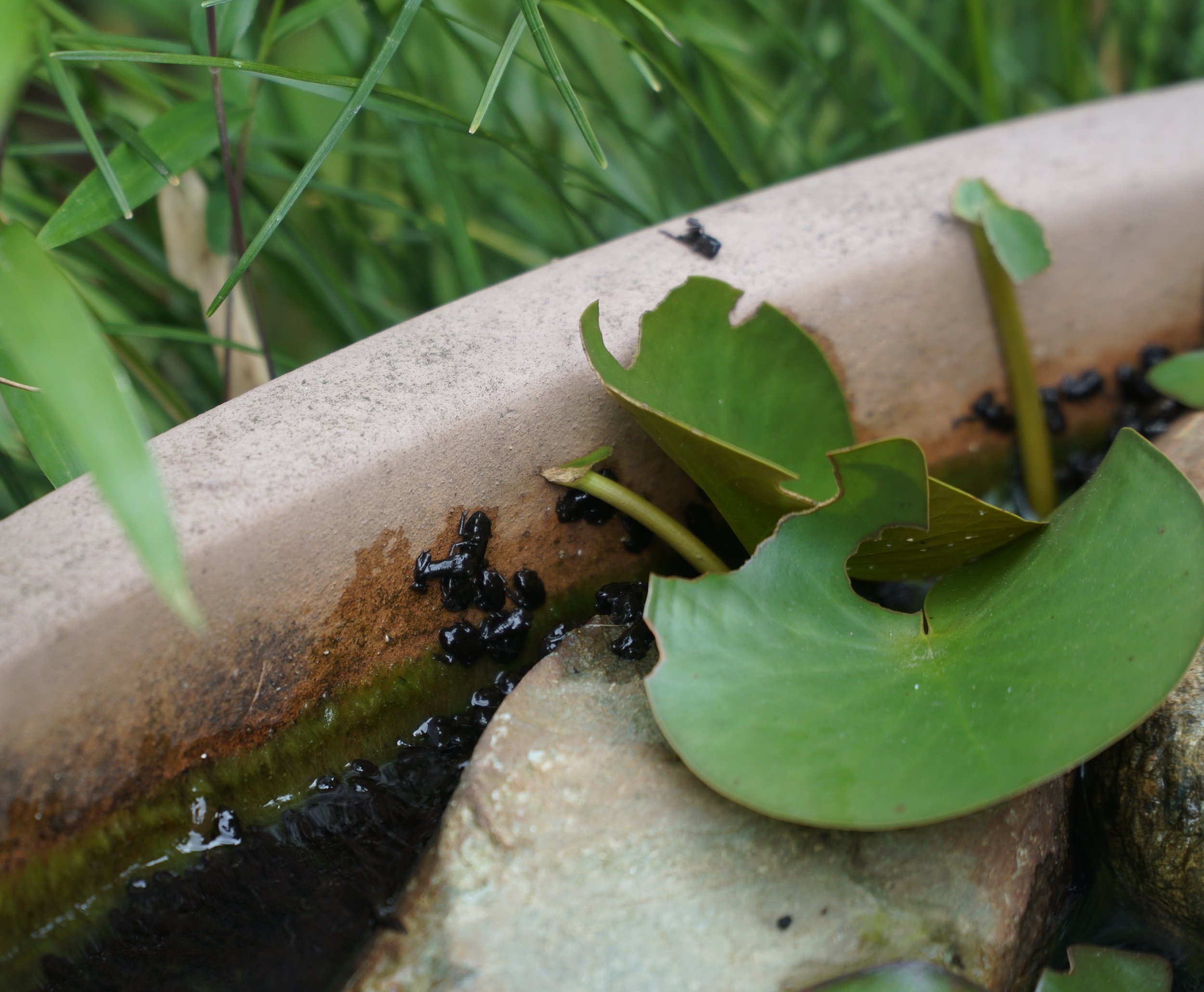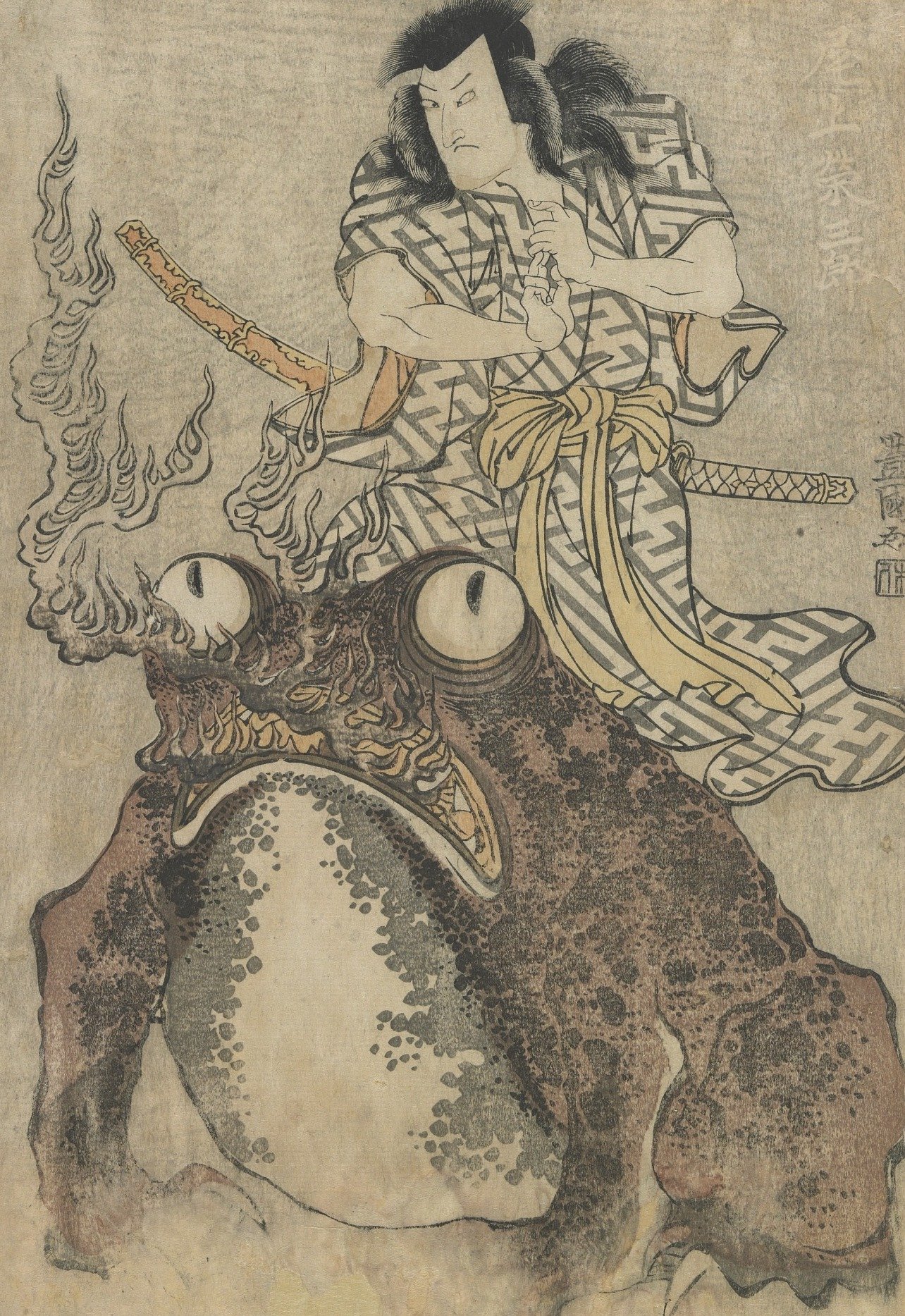Tokyo Toads
When spring comes to Tokyo, most people look up. The ume plum blossoms and anzu apricot trees are the opening act for the main attraction of sakura cherry blossoms. The entire city, for once, looks in the same direction. Everyone rolls their head back like a newborn bird and receives the sustenance of cherry blossom beauty from above. I do, too.
But for the past few years, I’ve also started to look down. The mud, grass, and rainwater draw my eyes to the earth. What I relish finding there, at spring blossom time, are toads. Rather amazingly for a city of this size, speed and pavement, my back garden has toads, two last year, five this year, and hundreds of tadpoles. Their arrival is just as sure a sign of spring as the sakura, and just as amazing.
Yet, most people cringe at the word “toad” and hum delightedly at “cherry blossoms.” That’s why March and April weather reports end with the cherry blossom schedule from Okinawa to Hokkaido, but never report on toad mating season. That hardly seems fair. Hanami, yes, but why not ushigaeru-mi, too?
I love when the toads first emerge from their winter hibernation. Frumpy and ponderous, they don’t jump, they crawl, and not very gracefully, as if still half-asleep, as if their limbs were made for something else. They are baggy-skinned blobs, creatures of gravity, in balance with its pull. Toads dig down, relishing the earth, burrowing face-first into the mud and muck humans avoid.
Blossoms are the opposite of that, resisting the earth and refusing gravity. The blossoms are light enough to catch the breeze and dance and dart like baby kites. They carry your feeling skyward, billowing with life. Framed against a blue, even a grey sky, they tickle your eyeballs with their flight, and their final fall to earth.
Toads seem half-dead most of the time, patiently waiting for the next insect or once-a-year chance to mate. They stay in place, prodded to move only by predator or procreation. They seem content where they are, half-hidden under some clump of forest grass or wedged under a rock. They amble and stall, their directions and desires pre-decided.
Blossoms redecorate the outdoors with a ceiling and carpet of red, white, and pink. Lit up by the sun, they layer outdoor spaces—gardens, waterways, sidewalks—with desire. If there were cherry blossoms all year round, maybe no one would pay them much attention, but they come and go so quickly, it’s impossible not to feel their power, to say how beautiful they are before they’re gone.
Toads don’t draw attention at all. They blend in with colors that you see all year round. Toad skin is like tree bark, mottled and rough. With black dots, greenish splashes, dark browns, and dull beige patches on the chest, I often don’t see them until it’s nearly too late. Unlike the showy, brilliant blossoms, toads exhibit barely a shift from winter colors.
But when I do stumble over one lurking in the dark parts of the garden, I always feel surprised, and then I laugh. Toads are nature’s silent comedians, the straight-faced act that delivers simple amusement. They seem so improbable a creature to carry on in a city like Tokyo, even in the thin slice of nature in our backyard.
When it rains, they bounce up and down in my little pond, clucking and barking, dunking below the surface, resting two eyes just above, drinking water through their skin. They sometimes tumble off the little stairway of rocks I made for them to get in and out of the pond, a slapstick pratfall, like some half-broken toy. They land on the grass, roll over, and I laugh on cue.
It’s a given that cherry blossoms are the billowy stage curtains around the brevity of life, a frame for grasping the fleeting beauty of the world. But laughing is a kind of beauty, too, and another way of apprehending the world. I always enjoy a toad laugh, especially since nature doesn’t joke too often.
And then they mate. The female carries the male around on her back and together they slather long strings of fertilized egg casings back and forth through the pond. It takes several days and the male rides there the whole time. After the eggs are strung, the male and female go their separate ways, both of them eyeing me for a moment before they creep back to snooze until summer’s insect-eating season.
The hundreds of tadpoles they produce have greater claim to beauty. The little black swimmers slip out of their sacs and start wriggling immediately, speeding up under the sun and slowing down with the evening’s cold. One by one, they become tight black mini-toads, cute and comic, moving jerkily until plucked off by some passing bird, or, beating the odds, surviving who knows where.
And though only a fraction of the tadpoles survive, their short lives don’t stir the same poetic feeling as cherry blossoms do. When the blossoms fall, it’s an emotional fall. We want to see them keep going, to fly away, though they never do. Maybe the feeling of dirt, moss, muck, and water plants doesn’t inspire transcendence.
Toads don’t stir lofty aspirations. They are horizontal creatures, practical, bound to forward routes, never out in the sun for long. They emerge from hibernation and pursue reproduction. They are at ease with the surface of the earth, moving as if mapping it, at times hardly distinguishable from the mud they tunnel into. But like the blossoms, they always return, on schedule.
And just as cherry trees have their own history going back to the Heian Period and expanding through the Tokugawa Era, toads, too, have their history, though it’s less often told. The Musashino plains of western Tokyo where I live were long the hunting fields for the samurai of old Edo. They were a place to race horses, practice falconry, run large dogs, and bag edible creatures of all kinds. I’m not sure what toads did then, but that hunting culture is gone, and the toads remain.
Toads, I read, are not nomadic, staying close to their origins, often reproducing in the same waters where they were spawned. They do not adapt well if transported to another place and toad websites advise not to. Cherry trees, however, can be replanted almost anywhere. And in Tokyo, they are. But toads are tied to the earth where they were born, surviving on their ancestors’ turf. I’m startled to think the toads in my backyard must have an ancient lineage.
When we first moved to our house, one toad used to join us on summer nights. It surprised me every time and drew a chuckle. For a toad, it’s not so easy to get into our backyard, I’d think. It’s outlined with cinderblock. But toads have their ways. He, or she, (she, I think), would waddle through the tall grass at night to sit right on the step at the edge of our porch.
While we finished our dinner and sipped wine, the toad slurped insects drawn by our solar lights.
I always toasted that toad with a magnanimous, drunken welcome for joining us in our backyard. But I suppose it was really the toad that was welcoming us to her family’s territory.
Now, after many years of spring toads, they seem as much a part of early spring as cherry blossoms, and for me, just as anticipated. Of course, I still love cherry blossoms. Who doesn’t? But as the years add up, I feel the need to look down at the earth as well as up to the branches and sky above. And a good laugh with the garden toads always complements—and enhances—the feelings from the cherry blossoms at the start of another spring.
May 2022







